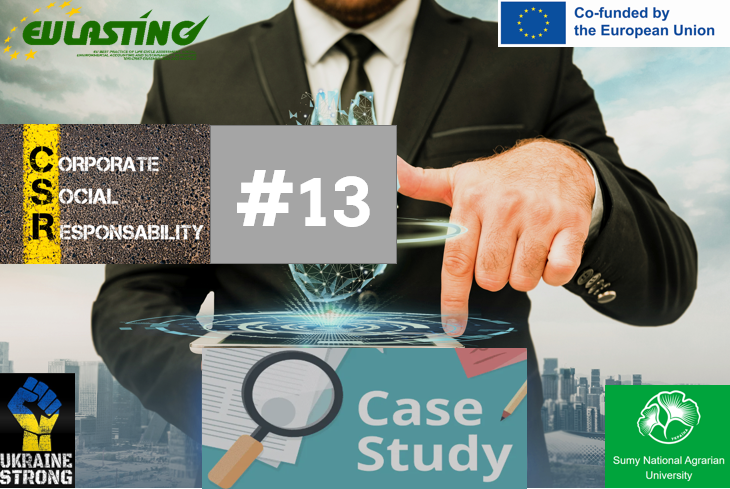Microsoft’s sustainability reporting stands out for strategic clarity, granular data, and bold ambitions that make it a global model for corporate ESG performance. In its 2025 Environmental Sustainability Report, Microsoft details progress on three major goals: to become carbon negative, water positive, and zero waste by 2030, all while protecting and restoring ecosystems globally.
Governance and Scope
Microsoft’s sustainability governance is led by Chief Environmental Officer Lucas Joppa and a dedicated sustainability committee reporting to the Board. The company’s baseline year for most metrics is 2020, marking a strategic inflection point for the entire group. In 2024, Microsoft operated with 221,000 employees and $218 billion in annual revenue.
Microsoft’s sustainability data covers wholly owned and managed subsidiaries, including 160+ global real estate facilities and 30 datacenters. The company periodically recalculates historical metrics to ensure comparability, especially when business restructuring or methodology upgrades occur.
Carbon and Energy Performance
Microsoft made strong progress toward its goal of carbon negativity. In 2024, the company achieved a 23% year-on-year reduction in Scope 1 emissions (direct operations) and a 19% reduction in Scope 2 (market-based electricity). Scope 3 (value chain emissions) remained challenging but improved 11%, with supplier-specific initiatives driving reductions.
Highlights include:
-
22 million metric tons of contracted carbon removals in FY2024, with 1.69 million tons achieved as in-year neutrality.
-
Direct renewable electricity powering 95% of global operations, up from 85% in 2021.
-
A total of 7.3 million MWh of renewable energy generated or procured, comparing favorably with industry peers (Google: 6.6 million MWh; Amazon: 9.4 million MWh).
Microsoft’s purchase of renewable power is tracked via third-party verified Renewable Energy Certificates (RECs), with full transparency on source and country of origin. It is on track to reach 100% renewable power for all data centers by 2025.
Water Positivity and Circularity
A market first, Microsoft committed to becoming water positive by 2030. In 2024, it replenished 1.5 billion liters of water through nature-based solutions—47% improvement over 2023 figures. The company reduced water use intensity (cubic meters per $M revenue) by 8% and restored wetlands and watersheds in partnership with local governments in India, California, and Germany.
Zero waste initiatives saw the company divert 97% of datacenter waste from landfill and achieve a 24% reduction in hazardous waste year-on-year. Circular solutions include closed-loop packaging, upcycling of electronics, and sustainable procurement protocols, driving waste intensity per $M revenue to a record low 0.38 tonnes—a 30% improvement versus 2022.
Ecosystem Restoration and Nature-Based Solutions
In 2024, Microsoft invested $230 million in global ecosystem restoration projects, supporting afforestation, sustainable agriculture, and community water resources. 9.6 million trees were planted via partnerships in Kenya, Brazil, and China, and coastal mangrove restoration improved local climate resilience.
Biodiversity is monitored through digital dashboards and third-party verification. The company ranks ahead of peers in ecosystem investment per $M revenue (Microsoft: $2.8; Google: $2.2; Amazon: $1.7).
Supply Chain and Data Transparency
Supplier engagement is data-driven, with all Tier 1 suppliers required to report Scope 1-3 emissions and water risks. The Supplier Sustainability Program launched predictive analytics tools, identifying high-risk suppliers and enabling tailored interventions that improved compliance rates by 15 points in 2024—reaching 88%.
Microsoft batches all sustainability disclosures with annual financial reports and uses externally assured data, aligning with GRI, SASB, TCFD, and ISSB standards.
Social Impact and Community Engagement
With $2.1 billion in annual community investments, Microsoft’s social metrics include gender and diversity disclosure, pay equity statistics, and digital skills training. In 2024, the company reached 1.6 million people in underserved communities through its AI for Earth and Tech for Social Impact initiatives.
Workplace diversity rose, with women representing 30.4% of global management—outpacing the tech industry average of 26%.
Recognition and Stakeholder Trust
Microsoft was ranked #1 for digital ESG disclosure by Sustainalytics and received EcoVadis Platinum status, placing it in the top 1% of technology companies worldwide. Investor confidence is supported by transparent, comparable, data-rich reporting.
Benchmark Metrics
Compared to peers:
-
Scope 1 emissions per $M revenue: Microsoft 0.11 tCO₂e; Google 0.13; Amazon 0.18.
-
Water use per $M revenue: Microsoft 2.8 m³; Google 2.9; Amazon 3.1.
-
Waste diverted from landfill: Microsoft 97%; Apple 95%; Google 89%.
-
Renewable energy adoption: Microsoft 95%; Apple 100%; Amazon 84%.



